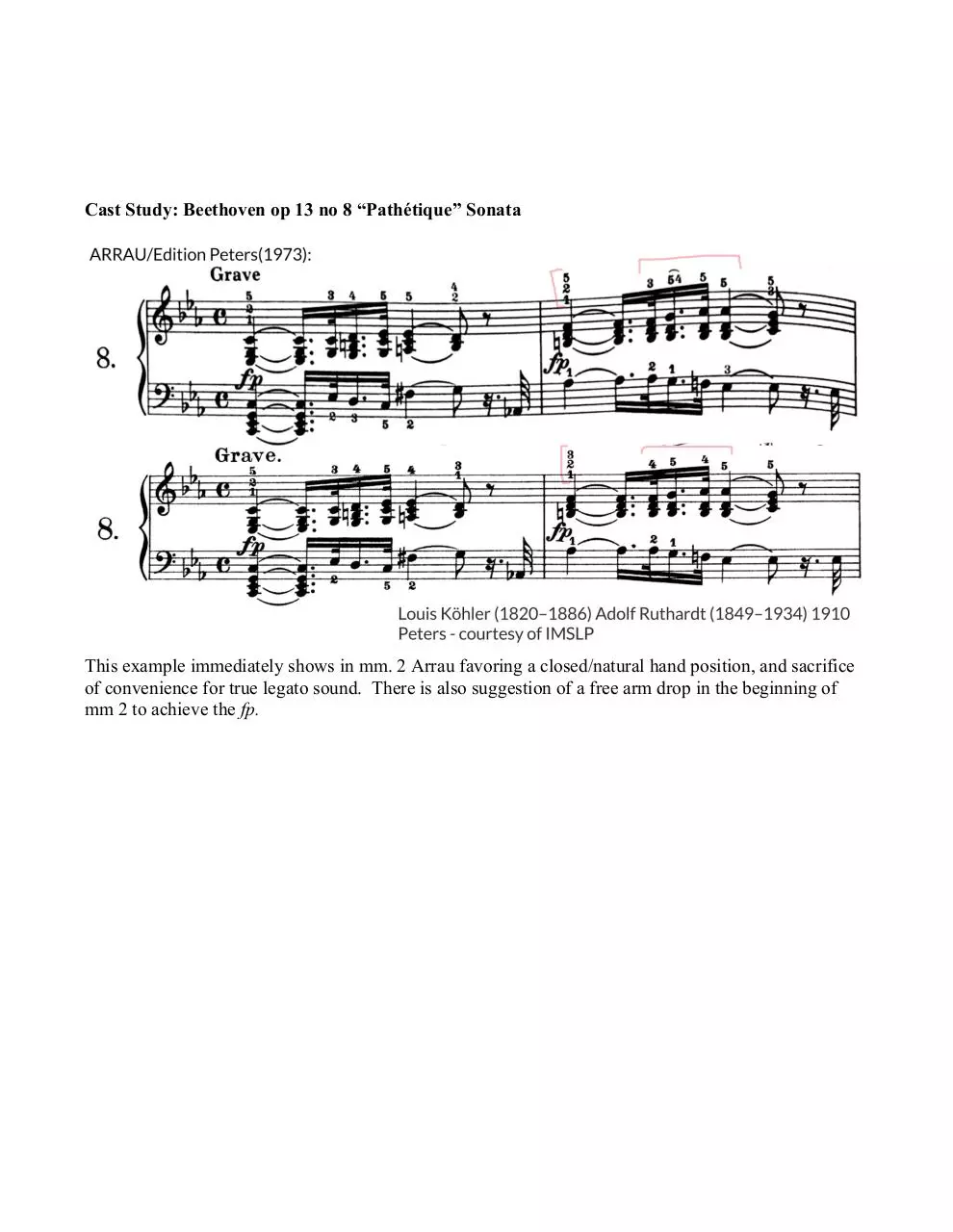handout 11 28 (PDF)
File information
Title: Microsoft Word - handout 11-28.docx
This PDF 1.3 document has been generated by Word / Mac OS X 10.12.1 Quartz PDFContext, and has been sent on pdf-archive.com on 30/11/2016 at 07:05, from IP address 67.189.x.x.
The current document download page has been viewed 244 times.
File size: 692.94 KB (2 pages).
Privacy: public file


File preview
Emily Wallace
November 28, 2016
MUS 664 Smith
Performance Practice Presentations
“The Romantic Tradition and Lineage, Genealogy, Inheritance…”
The Phenomenon: Pianists in the continuing Romantic tradition take special pride in their
lineages of teachers, especially if they lead back to Beethoven. There is often an unspoken
assumption that technique, artfulness, or other “sacred” knowledge can be handed down from
teacher to student.
Thesis: Various musicologists have criticized this idea as mere myth. Using sources and
personal experience I will argue that this is not the entire story. Evidence shows clear tangible
items acting as a vehicle for the transmission of intangible information.
Tangible Items Which are Handed Down in Studio:
• Books which are recommended or required reading
o EX: Conversations with Arrau – Joseph Horowitz (interview with Arrau on teachings)
o EX: The Piano Master Classes of Franz Liszt, 1884-1886 : Diary Notes of August
Göllerich
• Editions which are used or elevated above others
o EX: the Complete Beethoven Piano Sonatas, ed. By Claudio Arrau and Lothar HoffmanErbrecht. Edition Peters No. 8100, 1973. (Claudio’s fingerings are preserved)
• Specific recordings/performances
o EX: Arrau’s late Beethoven performances
Intangible Information transmitted w/ instruction and tangible materials:
(more diff. to prove but are suggested and preserved with tangible materials)
• Technique
• Interpretation
• Repertoire preferences
• Pedagogical practices
Claudio Arrau’s Technique and Teaching (Case study of specific Fingerings on opposite side)
• Natural arm weight and free arm drop, freedom of wrist to help fingers – creating a massive, full,
round, orchestral tone without “attacking” or “harshness”
• Favor of natural round relaxed hand shape – removal of all unnecessary tension for
emotional/spiritual freedom in performance
• “True” legato and legato fingering
Class questions:
1. What are some characteristics of Claudio Arrau’s technique?
2. What tangible sources suggest the preservation of Claudio Arrau’s technique?
3. What are some examples of intangible information which may be transmitted from teacher to
student?
Cast Study: Beethoven op 13 no 8 “Pathétique” Sonata
This example immediately shows in mm. 2 Arrau favoring a closed/natural hand position, and sacrifice
of convenience for true legato sound. There is also suggestion of a free arm drop in the beginning of
mm 2 to achieve the fp.
Download handout 11-28
handout 11-28.pdf (PDF, 692.94 KB)
Download PDF
Share this file on social networks
Link to this page
Permanent link
Use the permanent link to the download page to share your document on Facebook, Twitter, LinkedIn, or directly with a contact by e-Mail, Messenger, Whatsapp, Line..
Short link
Use the short link to share your document on Twitter or by text message (SMS)
HTML Code
Copy the following HTML code to share your document on a Website or Blog
QR Code to this page

This file has been shared publicly by a user of PDF Archive.
Document ID: 0000514776.